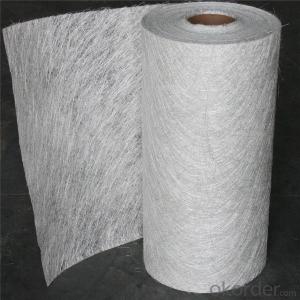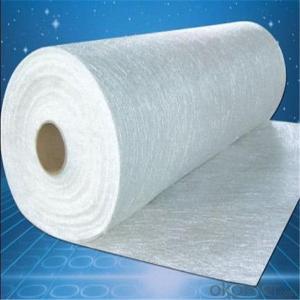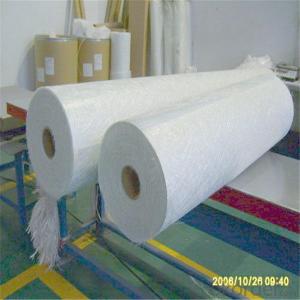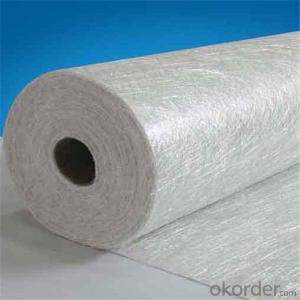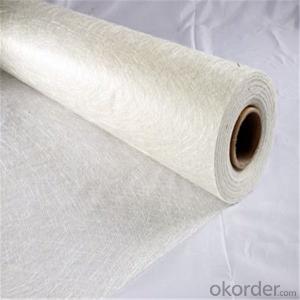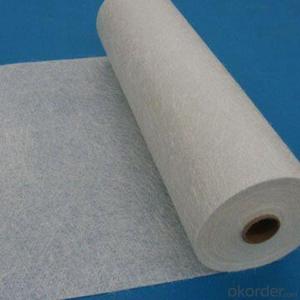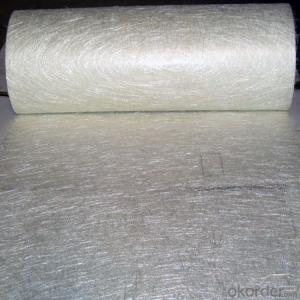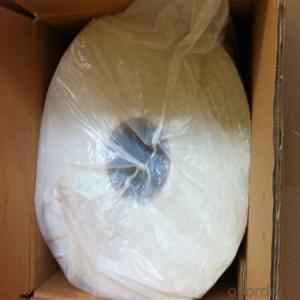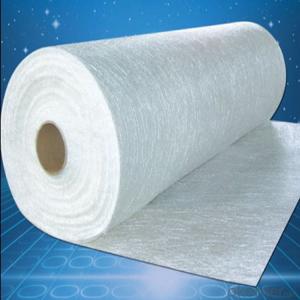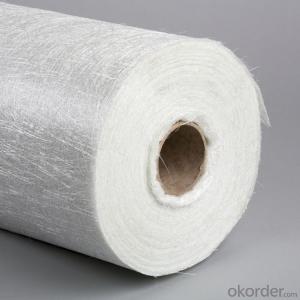E-glass Chopped Stand Mat, Woven Fiberglass Cloth
- Loading Port:
- Tianjin
- Payment Terms:
- TT OR LC
- Min Order Qty:
- 100 m.t.
- Supply Capability:
- 10000 m.t./month
OKorder Service Pledge
OKorder Financial Service
You Might Also Like
Quick Details
| Technique: | Chopped Strand Fiberglass Mat (CSM) | Dimensions: | 80g - 900g | Mat Type: | Continuous Filament Mat |
| Fiberglass Type: | E-Glass | Softness: | soft, very soft | Place of Origin: | Shandong, China (Mainland) |
| Brand Name: | cnbm | Model Number: | CSM | material: | fiberglass |
| Glass type: | E glass / C glass | Bond type: | powder or emulsion | Roll width: | 200 - 2600mm |
| Roll weight: | 28 - 55kgs | Density: | 225g/m2, 300g/m2, 450g/m2 | Certification: | ISO, CE |
Packaging & Delivery
| Packaging Details: | standand export packing . or packed as customer's need |
| Delivery Detail: | 10-20days after the contract is effective |
Specifications
Fiberglass Chopped Strand Mat
1.good combination fo resin
2.easy operation
3.good wet strength retention
Specification:
Fiberglass Chopped Strand Mat is an non-woven E- or C-glass fiberglass fabric manufactured by spreading continuous filament rovings of 50mm in length randomly and uniformly in combination with polyester binder in power form (or other binder in emulsion form). Powder or Emulsion fiberglass fiber chopped glass mat

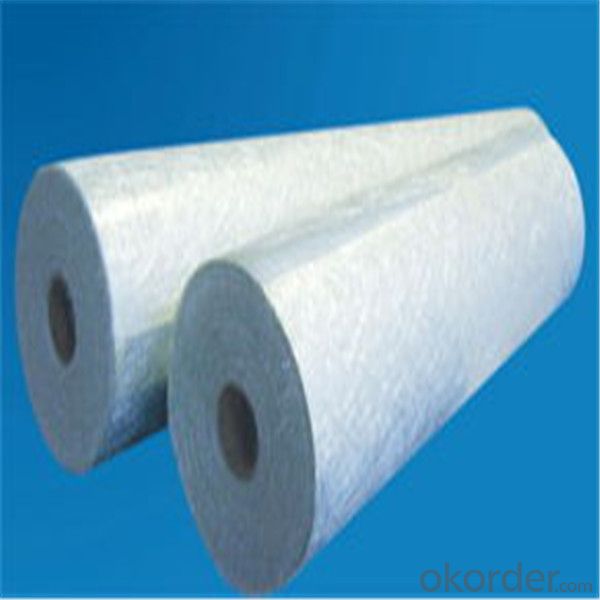
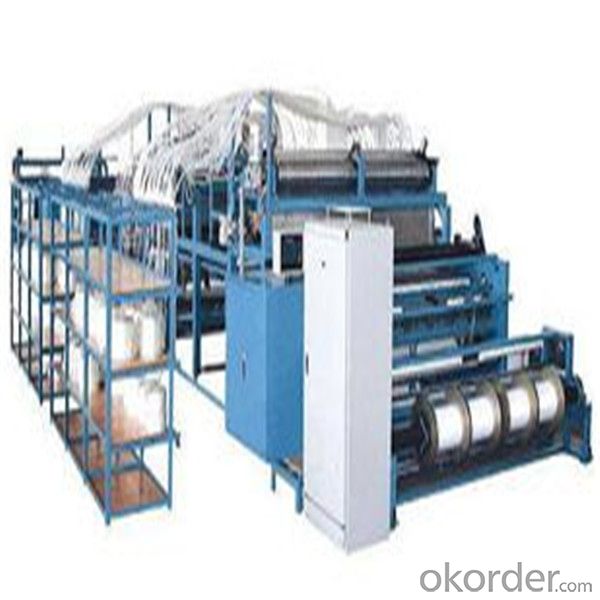
- Q:What does glass fiber reinforced plastic ant medium mean?
- The raw materials and technical requirements of producing glass fiber reinforced. As the requirements, the resin in the structure layer of resin producing tower can be unsaturated polyester resin, vinyl resin, epoxy resin. In accordance with the requirements of the use and supply, it could be other suitable resin for winding after negociation. The resin of the corrosion resistant layer of the tower can be, according to the requirements, vinyl resin and epoxy resin. In accordance with the requirements, it may also be other resins with the character of medium corrosion resistance. . Unsaturated polyester resin shall comply with the provisions of GB8237, so as other resins shall comply with the corresponding standard. Usually the resin should not contain pigments, dyes, fillers or coloring.
- Q:How does the flexibility of fiberglass chopped strand affect its handling and processing?
- The handling and processing capabilities of fiberglass chopped strand are directly influenced by its flexibility. This characteristic allows fiberglass chopped strand to be easily integrated and dispersed into different resin systems, making it an ideal material for composite applications. This flexibility ensures that the chopped strand is evenly distributed throughout the resin matrix, resulting in improved overall performance and mechanical properties of the final product. Additionally, the flexibility of fiberglass chopped strand plays a crucial role in its ease of use during manufacturing processes. It can be effortlessly poured, sprayed, or molded into various shapes and forms, making it highly adaptable to different production techniques. The flexibility also assists in achieving consistent coverage and reinforcement within the resin matrix, leading to enhanced strength and durability of the composite material. Furthermore, the flexible nature of fiberglass chopped strand allows it to conform to intricate shapes and contours, making it a suitable choice for applications that require complex designs. It can be easily oriented and shaped to meet specific requirements, facilitating the production of customized products. In conclusion, the flexibility of fiberglass chopped strand significantly enhances its handling and processing properties, making it a preferred option for industries such as automotive, aerospace, construction, and marine.
- Q:Can fiberglass chopped strand be used in high-temperature applications?
- To a certain extent, fiberglass chopped strand can indeed be utilized in high-temperature applications. E-glass fibers, typically used in chopped strand production, boast a melting point ranging from approximately 1000 to 1200 °C (1832 to 2192 °F). As a result, it is suitable for applications within this temperature range. Nonetheless, it is crucial to acknowledge that the mechanical properties of fiberglass may deteriorate when exposed to elevated temperatures. Under high heat, the fibers can become brittle and lose their strength, potentially impacting the material's performance. Furthermore, it is important to consider the temperature limitations of the resin used to bind the chopped strand when choosing the appropriate material for high-temperature applications. If the desired application surpasses the temperature threshold of fiberglass chopped strand, alternative materials such as ceramic fibers or high-performance composites should be taken into consideration. These materials are specifically engineered to withstand significantly higher temperatures and offer superior performance under extreme heat conditions.
- Q:Can fiberglass chopped strand be used in water storage tanks?
- Yes, fiberglass chopped strand can be used in water storage tanks. Fiberglass is a strong and durable material that is resistant to corrosion and can withstand harsh environmental conditions. It is commonly used in the construction of water storage tanks due to its excellent properties, including high tensile strength, low weight, and resistance to chemicals and UV radiation. The chopped strand form of fiberglass is often used in the manufacturing process of fiberglass-reinforced plastics (FRPs) which are widely used in water storage tanks. The chopped strands are usually mixed with a resin matrix to create a composite material, providing added strength and structural integrity to the tank. Additionally, fiberglass is non-porous, making it an ideal material for preventing water leakage and contamination. Overall, fiberglass chopped strand is a suitable and commonly used material in the construction of water storage tanks.
- Q:How does the impact resistance of fiberglass chopped strand compare to other reinforcing materials?
- Fiberglass chopped strand is widely recognized for its superior impact resistance compared to other reinforcing materials. Its high strength-to-weight ratio enables it to endure significant impact forces without fracturing or distorting. In contrast, materials like steel or aluminum may exhibit satisfactory impact resistance, but their higher density and weight can restrict their effectiveness in certain applications. Furthermore, when juxtaposed with natural fibers such as jute or cotton, fiberglass chopped strand presents considerably greater impact resistance. Natural fibers tend to be less robust and possess lower tensile strength, rendering them more vulnerable to impact damage. In conclusion, fiberglass chopped strand offers a harmonious combination of strength, lightness, and impact resistance, rendering it a preferred option for numerous applications where durability and resilience are crucial considerations.
- Q:Can fiberglass chopped strand be used for reinforcing wood materials?
- Yes, fiberglass chopped strand can be used for reinforcing wood materials. It is commonly used in combination with resins to strengthen and reinforce wood structures, providing increased durability and resistance to bending, cracking, and warping.
- Q:What are the disadvantages of using fiberglass chopped strand?
- One disadvantage of using fiberglass chopped strand is that it can cause skin irritation and respiratory issues if proper protective measures are not taken. Additionally, fiberglass chopped strand can be brittle and prone to breaking, which may result in reduced structural integrity and durability. The process of working with fiberglass chopped strand can also be messy and require special equipment, leading to increased costs and complexity.
- Q:Is fiberglass chopped strand compatible with different curing methods?
- Yes, fiberglass chopped strand is compatible with different curing methods. Fiberglass chopped strand is commonly used as a reinforcement material in various industries such as automotive, construction, and aerospace. It can be used in conjunction with different curing methods, including thermosetting and thermoplastic processes. In thermosetting processes, such as resin transfer molding (RTM) or vacuum infusion, the fiberglass chopped strand is typically impregnated with a thermosetting resin, which is then cured at elevated temperatures. The resin undergoes a chemical reaction, resulting in a hardened and durable composite material. Fiberglass chopped strand is compatible with these processes as it provides strength and reinforcement to the cured composite. In thermoplastic processes, such as injection molding or compression molding, the fiberglass chopped strand is mixed with a molten thermoplastic resin, which solidifies upon cooling. The chopped strand reinforcement enhances the mechanical properties of the thermoplastic material, making it stronger and more resistant to deformation. Fiberglass chopped strand is compatible with these processes as it can be easily incorporated into the molten resin and distributed evenly throughout the molded part. Overall, fiberglass chopped strand is a versatile material that can be used with different curing methods, providing enhanced strength and durability to the final product. Its compatibility with various processes makes it a preferred choice in industries where high-performance composites are required.
- Q:Can fiberglass chopped strand be used in electrical cables?
- No, fiberglass chopped strand is not typically used in electrical cables. Electrical cables require materials that have excellent electrical conductivity and insulation properties, such as copper or aluminum for conductors and various types of insulating materials like PVC, XLPE, or rubber. Fiberglass chopped strand, on the other hand, is primarily used in the manufacturing of composite materials, such as fiberglass reinforced plastics, where its high strength and corrosion resistance characteristics are advantageous.
- Q:How does the fiber dispersion uniformity of fiberglass chopped strand affect the quality of composites?
- The quality of composites is significantly influenced by the uniformity of fiber dispersion in fiberglass chopped strand. Fiber dispersion refers to how the individual glass fibers are evenly distributed within the composite material. To achieve optimal mechanical properties and overall performance, it is essential to have uniform fiber dispersion. When the chopped strands are evenly dispersed, they provide consistent reinforcement throughout the material. This leads to improved strength, stiffness, and durability. The uniformity ensures that the load is evenly distributed across the composite, minimizing the risk of weak spots or areas prone to failure. On the other hand, if the fiber dispersion is not uniform, it can result in various quality issues in the composites. Uneven distribution of fibers can create localized areas of high fiber concentration, causing stress concentrations and potential weak points. These weak points compromise the overall strength and structural integrity of the composite, making it more susceptible to cracking, delamination, and failure under load. Non-uniform fiber dispersion can also cause variations in the mechanical properties of the composite. Inconsistent reinforcement distribution leads to variations in stiffness, strength, and other mechanical characteristics across different regions of the composite. This lack of uniformity negatively impacts the predictability and reliability of the material, making it challenging to design and manufacture composite components with consistent performance. In conclusion, the fiber dispersion uniformity of fiberglass chopped strand is crucial for determining the quality and performance of composites. A uniform dispersion ensures even reinforcement distribution, resulting in improved mechanical properties and overall durability. On the other hand, non-uniform dispersion can lead to weak points, inconsistencies in mechanical properties, and reduced reliability of the composites. Therefore, maintaining a high level of fiber dispersion uniformity is essential for producing high-quality composites with consistent performance.
1. Manufacturer Overview |
|
|---|---|
| Location | |
| Year Established | |
| Annual Output Value | |
| Main Markets | |
| Company Certifications | |
2. Manufacturer Certificates |
|
|---|---|
| a) Certification Name | |
| Range | |
| Reference | |
| Validity Period | |
3. Manufacturer Capability |
|
|---|---|
| a)Trade Capacity | |
| Nearest Port | |
| Export Percentage | |
| No.of Employees in Trade Department | |
| Language Spoken: | |
| b)Factory Information | |
| Factory Size: | |
| No. of Production Lines | |
| Contract Manufacturing | |
| Product Price Range | |
Send your message to us
E-glass Chopped Stand Mat, Woven Fiberglass Cloth
- Loading Port:
- Tianjin
- Payment Terms:
- TT OR LC
- Min Order Qty:
- 100 m.t.
- Supply Capability:
- 10000 m.t./month
OKorder Service Pledge
OKorder Financial Service
Similar products
New products
Hot products
Related keywords
